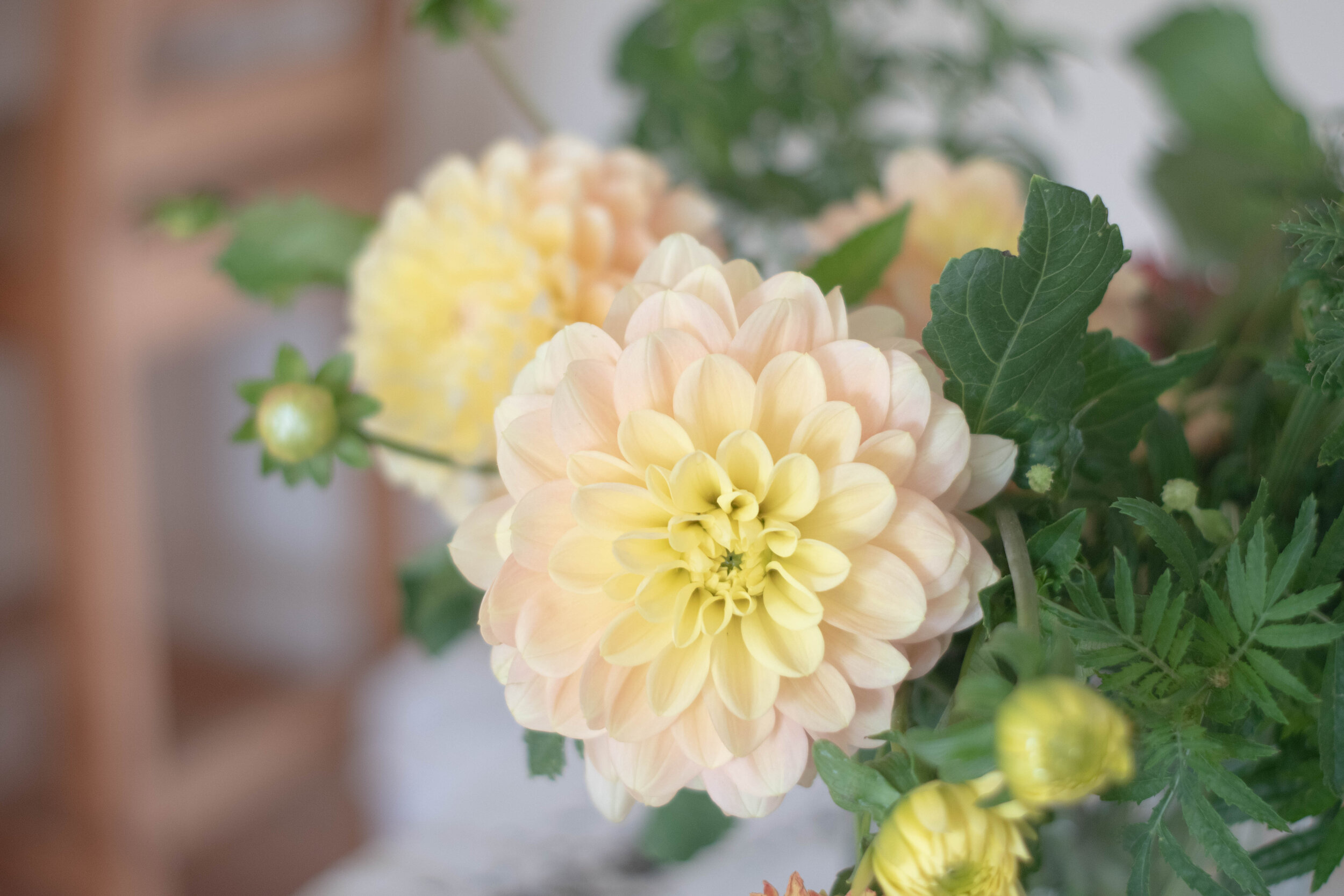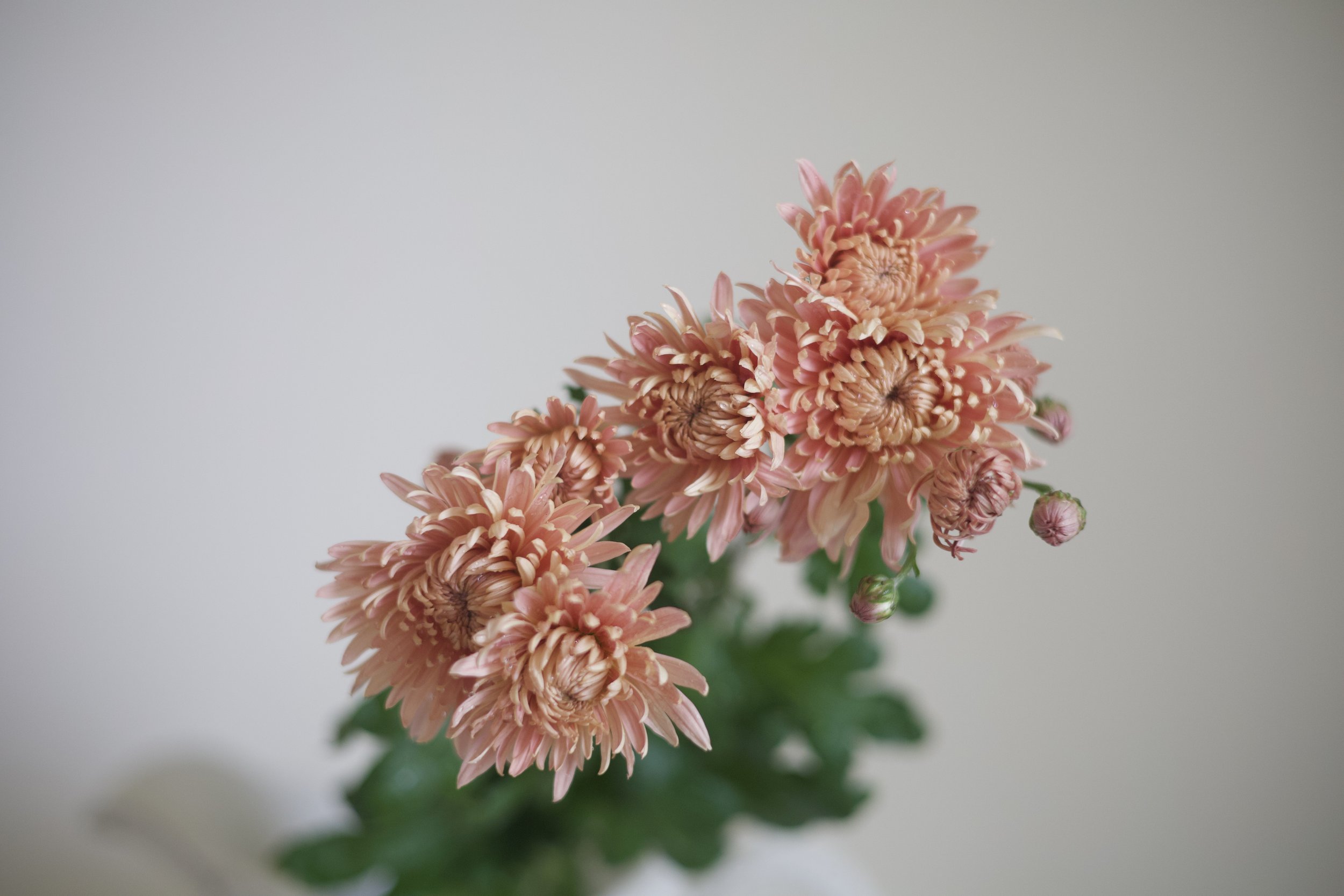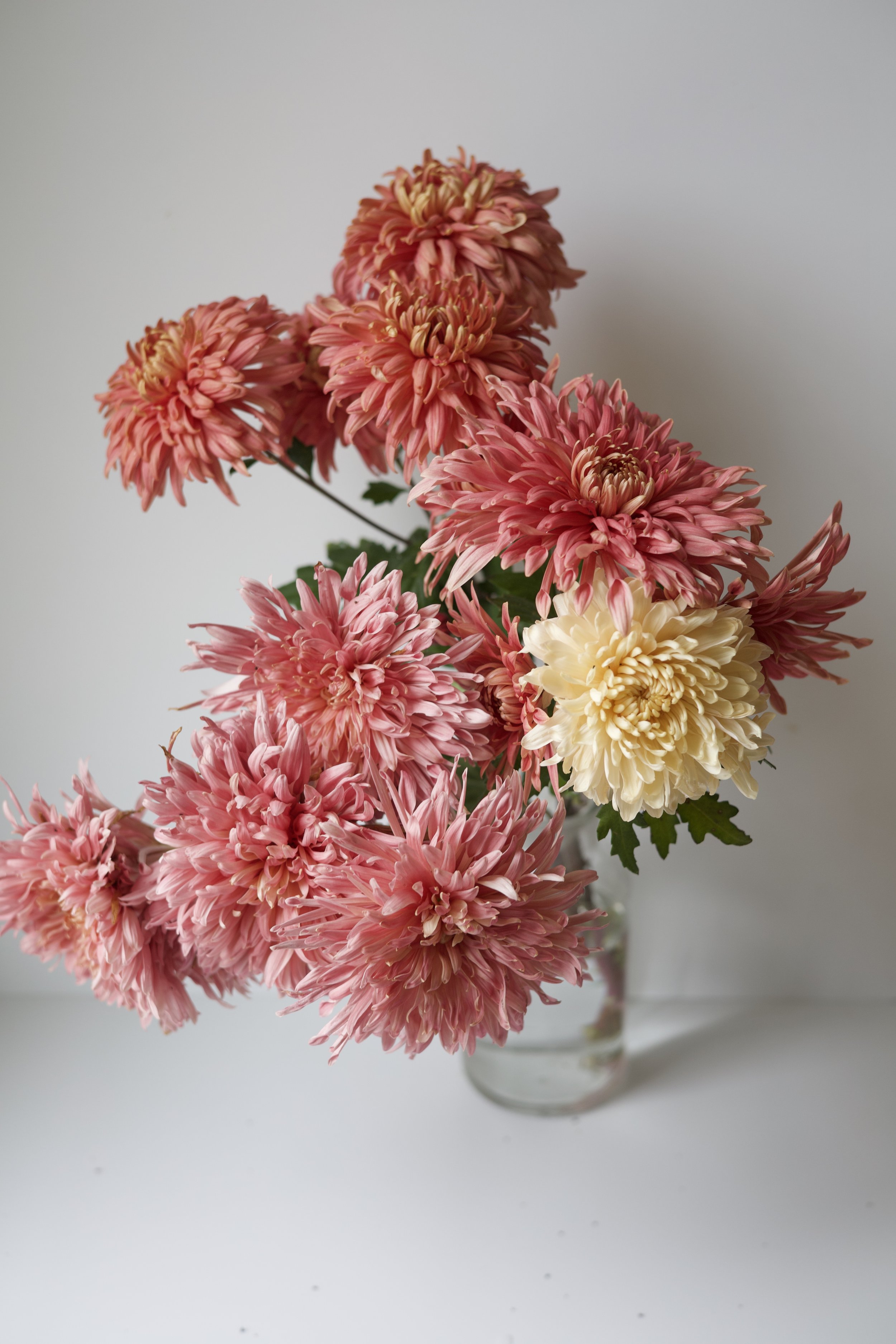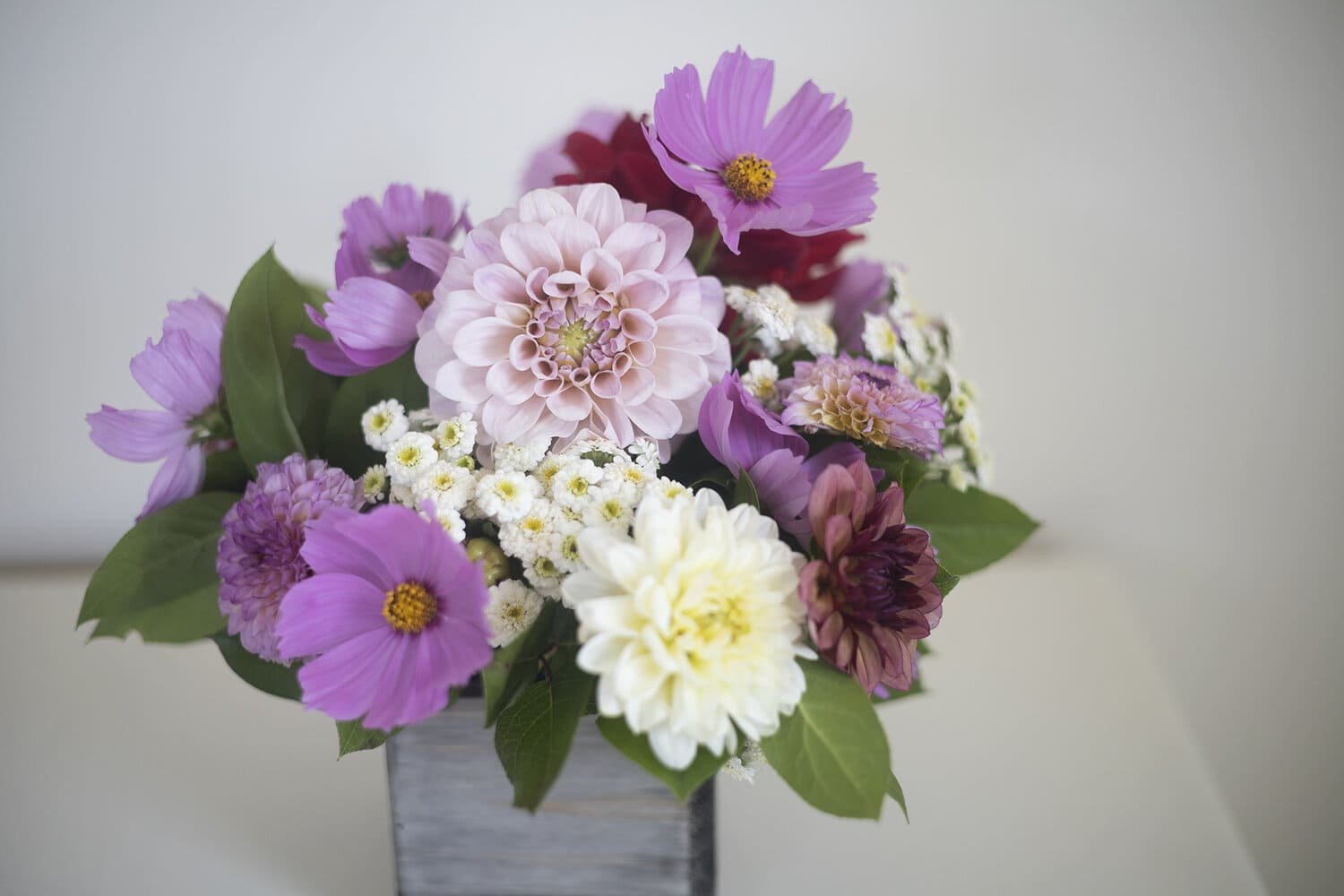Grow A Fall Vegetable Garden
By Sara Haller and Tegan Durfee
Certain vegetables need to mature when the weather is cool, after the heat of summer has passed, and so can only be grown in early spring or started in the summer so they mature during the cool fall months. Planting a late season garden is very rewarding because it’s easy to produce a lot of wonderful produce that is quick to grow and very usable in the kitchen. Cool season crops can withstand light frost. Some, like kale and cabbage, can even handle winter snows.
Crops for the fall garden include:
carrots lettuce broccoli kohlrabi
beets peas cabbage kale
turnips cauliflower radishes
Your first step is to identify your first frost date for the up and coming fall and winter. You’ll want to look up online when the first expected frost date is for your area, or in simpler terms, the first day of the autumn season where the temperature drops to 32 degrees (freezing) or lower. If you haven’t planted your crops soon enough for their needs, they could be too young to make it to maturity before consistent frost sets in for the winter.
Once you know the first frost date you will then look at the “Days To Maturity” on your seed packet and count that many days back from your last frost date. So, if your lettuce matures in 65 days and your first frost date is October 10th then you would plant around August 6th.
Once you’ve decided on your crops and figured out when that frost will come, its time to pick a good, sunny spot in your backyard with plenty of room for your garden. You’ll want to make sure the ground is tilled (broken up) and loose so you have no problem planting your seeds. Sprinkling some fertilizer or fresh compost onto this freshly tilled soil is a great way to get the most out of your garden. Something quick and easy from the store is just fine, fertilizers like MiracleGro Plant Food, and Osmocote Smart-Release Plant food work great!
When deciding which crops should go where in your garden, think about the end result of the crop itself and how large it will get. Taller plants should be laid out on the north end of your space so that they won’t shade shorter crops.
Get a paper and pen and draw out where each crop will sit. Look at packets for spacing recommendations. Carrots space 3-4 inches apart and ¼ inch deep with rows 1 foot apart, radishes space 1 inch apart and ½ inches deep, beets space 1-2 inch apart and ½ inch deep, lettuce (depending on the kind you choose whether it be leaf lettuce, cos and loose-head types, or firm headed) plant 4-16 inches apart in the rows and cover the seeds with ½ inch of soil, peas plant 2 inches apart and 1 inch deep, and finally kale needs to be planted 18-24 inches apart and ½ inches deep.
If you’re worried at all about how much spacing to give each crop, in each individual row lay out a measuring tape and sow your seeds matching the spacing for each crop.
Once your garden is sown, use a shower setting on your garden hose and gently water your garden so the soil is nice and saturated but don’t use a heavy stream on your hose setting or it can wash your seeds away. Depending on how hot it is you may overhead water for 5 minutes or so a few times a day until they germinate. Your seeds cannot dry out even once or they will not germinate so keep a close eye on them until they come - usually about 4-5 days. Once seedlings emerge you will begin to water less frequently until you eventually water deep once a week. At that point it’s optimal to water from below using drip irrigation or trenches with a soaker hose.
Watering is a balance. You don’t want to overwater or underwater. If you find your garden is looking a little drenched or dry, dig your index finger into the soil in the middle of your garden patch down to your second knuckle, if the soil down there still feels damp let your garden bask in the sun a little longer and dry out just a bit more. Overwatering plants can be almost as damaging as not watering them enough.
Once your plants are established, keep an eye on weeds and spend a minute each week keeping them down. You don’t want those little veggie seedlings to compete with anything for nutrients from the sun, water, or soil. It’s a great way to stay active and get outside.
Harvesting will begin in September and extend into October and anywhere in-between depending on the crop you’ve planted. Nothing feels better than the heft of a woven basket filled with hard work and fresh food.
In the above paragraphs we mentioned a few crops we’re focusing on, here is a quick view on when to harvest these: Carrots-harvest during a cooler time of the day, and when the carrots reach ½ in size in diameter. Radishes-harvest when they reach 1 inch in diameter. Beets-golf ball size or larger. Lettuce-harvest leaves when they’re full sized but just before maturity for the best tasting harvest, and start from the outside of the head and work your way in. Peas-Use two hands to steady the vine and pluck off the pod without damaging the whole plant and harvest early in the morning. Kale-The leaves will get around the size of your hand when they’re ready to be harvested, start from the lowest part of the plant and harvest fistfuls.
Recipe: Emily’s Summer Salad
Fresh salad is good for the body and for the tastebuds. I love going out to harvest a little bunch of lettuce and bringing it in for a salad. We offer a mix of lettuces that you can start in early spring or late summer for spring and fall salads. You can find those here. Lettuce can be grown indoors as well since it tolerates partial shade. This recipe is light and has a wonderful citrusy taste. It’s perfect for parties and gatherings.
Prep Time: 15 minutes
Servings: Makes one large salad as seen in the photos.
INGREDIENTS
FOR THE SALAD
4-6 cups Lettuce mix
2 apples
4 large carrots or 10 baby carrots
4-6 sweet peppers
1 cucumber
4-6 oz goat cheese
1 package of craisins
*You can adjust any of the above measurements to match your personal preference.
FOR THE DRESSING
Juice of 1 lemon
Equal amount of canola oil as lemon juice
2 cloves garlic
Salt
Pepper
*Mix and let sit a couple hours in advance
INSTRUCTIONS
Start with the dressing. Mix it up thoroughly and allow it time to sit in the fridge if you have that option.
Chop lettuce. I like to use a variation of lettuces to add color and variety.
Chop all your vegetables into small pieces. I like to slice the cucumber and I make sure the peppers and carrots are diced into small bits.
Sprinkle all the toppings over the lettuce. Do not add the dressings until just before you are ready to serve the salad. Once the dressing has been put on, the salad will not keep.
As soon as you are ready to serve, coat all the ingredients with the dressing.
If you’re interested in growing any of the other ingredients in this salad they can be found here: cucumber, red pepper , carrot. Cucumbers and peppers should be started in early spring and carrots are a cold crop that can be started in early spring or direct sown in mid/late summer so that they mature in the fall (later if you’re in zone 8+ or earlier if you’re in zone 4 or lower).
Thank you to Emily Davis for letting me post her recipe. This is one that she came up with and would bring to family parties and baby showers. I loved it so much that I asked her for the recipe and it’s become one of my favorites for summer evenings alongside fish or quiche.
5 Vegetables to Grow in Your First Garden
Are you new to the world of gardening? Don’t worry--you’re most certainly not alone! Every master gardener was a beginner at one point. The best thing you can do is just start! Here, we’ll tell you about five veggies that are great for someone just starting out.
1. Zucchini Squash
Talk about a producer! One plant will give you enough zucchini to feed a family. Zucchini does well in a variety of soils and a single plant will produce multiple squashes. It’s awesome chopped up into soups and sauces, or sautéed in butter. You can use it as a side dish or even make it into bread! That’s why growing it in your garden can be so useful. This is a great one for beginning gardeners.
So what do you need to know before you start? Zucchini like rich, well-drained soil the most (as do most plants) but they can still do okay in all different kinds of soil. They like heat and do best sown well after frost is passed. Growing two plants fairly close together so that they’ll pollinate each other will really help them thrive. I would try Black Beauty as a great variety to begin with. It is famously reliable and will do well almost anywhere.
2. Tomatoes
If you’ve never had home-grown tomatoes, you’re missing out. There is nothing to compare to a home grown tomato. Store bought doesn’t come close. Tomatoes from your garden go perfectly in pasta and other dishes, or just by themselves fresh off the vine. With lots of varieties to choose from, you’ll have plenty of options for your garden this year.
Tomatoes are most often transplanted from containers to the garden itself. They have a long growing season, and are one of the most productive plants you can grow in your beginner garden! There are all kinds of methods to getting bigger and better production but even the most novice gardener will get some nice tomatoes as long as they give their plants enough sun and keep things watered. Seeds are easy to start in an egg carton or some cups at the windowsill until frost has passed. Romas have less juice and so are great for making salads and bruschetta, Black Cherokee is famous for it’s amazing flavor, and Marglobe is a good all around classic. Those might be a few good ones to try. Cherry tomatoes are also lovely in salads or just to pop in your mouth.
3. Bush Beans
Every little garden should have some bush beans in it. They take up very little space, are easy to get up, and will give you loads of AMAZING beans for a long time throughout the summer months. If you don’t like string beans then you’re probably thinking of the little wilted green/gray slop that comes out of a can from the grocery store that are tolerable in casseroles. Fresh garden beans are a whole different ball game. Boiled over the stove until they’re soft and sprinkled with salt and butter, you will feel like you’ve died and gone to heaven. I like to grow a combination of green and yellow. Blue Lake Bush and Golden Wax are both awesome, and you should have lots of success with them.
4. Lettuce
Lettuce is really fun to grow because it has such a short span of maturity. In 55 days you’ll have beautiful fresh lettuce on your table. It is an extremely diverse family of vegetables with everything from little micro greens to big heads of iceberg lettuce. Lettuce is best grown in the spring and fall chill. If grown in the heat of the summer it will usually be bitter and go to seed. These plants prefer sun but can do well with a little shade. If planting an outdoor garden isn’t an option for you right now, you can even grow lettuce indoors at a sunny window! Some great classics to start with are Buttercrunch, Vates Kale, and Green Spinach.
5. Peppers
Peppers can really grow well in a variety of places, even without full sun depending on the variety. When I was a missionary for the Church of Jesus Christ of Latter-day Saints I was assigned to work in Kentucky to learn Spanish so that I could work among the Spanish speaking congregation. Hispanics often LOVE hot peppers and they are commonly used in almost everything they cook. I used to love going up to the doors of the most forgotten little apartments or trailers and noticing a little pepper plant next to the door or at the side of a house.
Jalapeño plants will give you dozens of these little green gems that you can mix into salsas, sauté for burgers or make into poppers. A lot of varieties have beautiful shiny green foliage that mix in beautifully to bouquets and arrangements. It’s best to start seed indoors and then transplant out. Don’t be intimidated about seed starting. You can just get any kind of container lying around the house and push the seeds into the soil. In a couple of weeks you’ll see happy little sprouts peeking out their heads and soon enough will have your own delicious peppers. A few good varieties to start with are Hot Tam Jalapeño and California Wonder.
Which vegetable do you want to start with? Let us know in the comments below! We would really appreciate you using our hashtag in your Instagram posts #growhalden. We love to see what you are doing in your garden.
Dig For Victory In 2020!
“These are days never to be forgotten…”
Here we are in the midst of a global pandemic and it’s hard to know what the future will bring. It helps me to remember that we are not the first generation to face difficulty and that it is often times like these that bring out the best in people and cause us to grow, as individuals and as a whole. At Halden we believe in the power of gardening. There is something about it that brings so much joy and satisfaction and SO in a world that could use a little more joy right now, we decided to create a campaign to help people grow victory gardens again in 2020!
The year 1939 marked the beginning of the Second World War. The coming years brought unprecedented trial for the American people. A severe food crisis erupted across the globe as farmers were recruited into military service and farms were transformed into battlefields. Mimicking what had been started in WW1, Americans across the country were encouraged to contribute to the war effort by planting, fertilizing, and harvesting their own fruits and vegetables so that more food could be shipped overseas.
Citizens rose up to the challenge to “sow the seeds of victory” by utilizing any idle land that could be found including school and company grounds, parks, backyards or available vacant lots. The war garden movement spread like wildfire, by word of mouth, through civic associations, women’s clubs, chambers of commerce and neighbor to neighbor as the American people banned together, enlisting themselves as “soldiers of the soil.”
“In 1942, roughly 15 million families planted victory gardens; by 1944, an estimated 20 million victory gardens produced roughly 8 million tons of food—which was the equivalent of more than 40 percent of all the fresh fruits and vegetables consumed in the United States…The Victory Garden campaign served as a successful means of boosting morale, expressing patriotism, safeguarding against food shortages on the home front, and easing the burden on the commercial farmers working arduously to feed troops and civilians overseas.” (America’s Patriotic Victory Gardens by Laura Schumm).
Why Victory Gardens Matter Today
In our day, 2020 brings on a foe much different than anything we have ever seen. And yet the same fear of the future, looms heavy in the human heart all over the world, just as it did in that day. It can be easy to wallow in the dark and desperate internet bogs as we huddle in our homes wondering when it will end. But rather than standing down, hunkered deep in the game of blaming and shaming and wondering and waiting, we can choose to stand up and go out into the sunshine and create something.
Just like the generation before, we believe that we can boost morale, that we can express patriotism, that we can safeguard against food shortages on the home front and ease burdens overseas as we once again plant victory gardens!
So wherever you are we invite you to enlist as a “soldier of the soil” and plant a victory garden this year! You may be sitting in a New York high rise or out on the plains of Wyoming reading this and shrugging your shoulders wondering what a victory garden would look like for you. Whatever your situation we assure you that you can create a victory garden.
You Can Do Your Part!
If you’re in a studio apartment in Chicago then you can make a little garden of herbs and flowers at your window sill. Perhaps you have an empty backyard fence or a little balcony that faces the sun. Whatever your situation we urge you to take this chance to grow something- whether it’s just flowers or vegetables- and to let it be a symbol of a cause that you believe in. You don’t need to be an expert gardener or even to have ever gardened before. No one was born knowing how to do something so the best way to learn is just to start. We promise you that whatever your victory garden looks like it will bring a little light into your life.
Halden Garden was officially launched a week after social distancing was announced in the United States. We seriously considered just waiting because who starts a business right now!? But we decided to forge ahead because we really do believe that right now more than ever the world needs gardening. There’s something about it that just fills you up and brightens your life and we want people to have that.
Share Your Stories. #haldendigforvictory
So we’re asking you to spread the word! And to join in the cause. We’ve created the hashtag #haldendigforvictory. We hope you’ll follow it and start using it to share this campaign to everyone you know! We want to see your victory gardens and hear about what they’re doing for you and your families. Thank you for your support. We would appreciate it so much if you share this with as many people as you can and spread the cause!
“Do not let us speak of darker days; let us speak rather of sterner days. These are not dark days: these are great days-- the greatest days our country has ever lived; and we must all thank God that we have been allowed, each of us according to our stations, to play a part in making these days memorable in the history of our race.” - Winston Churchill















































